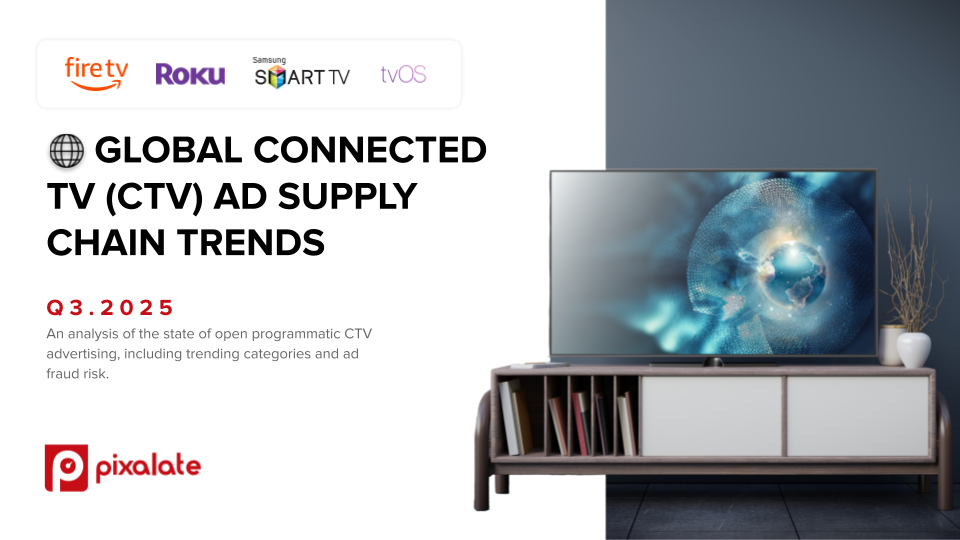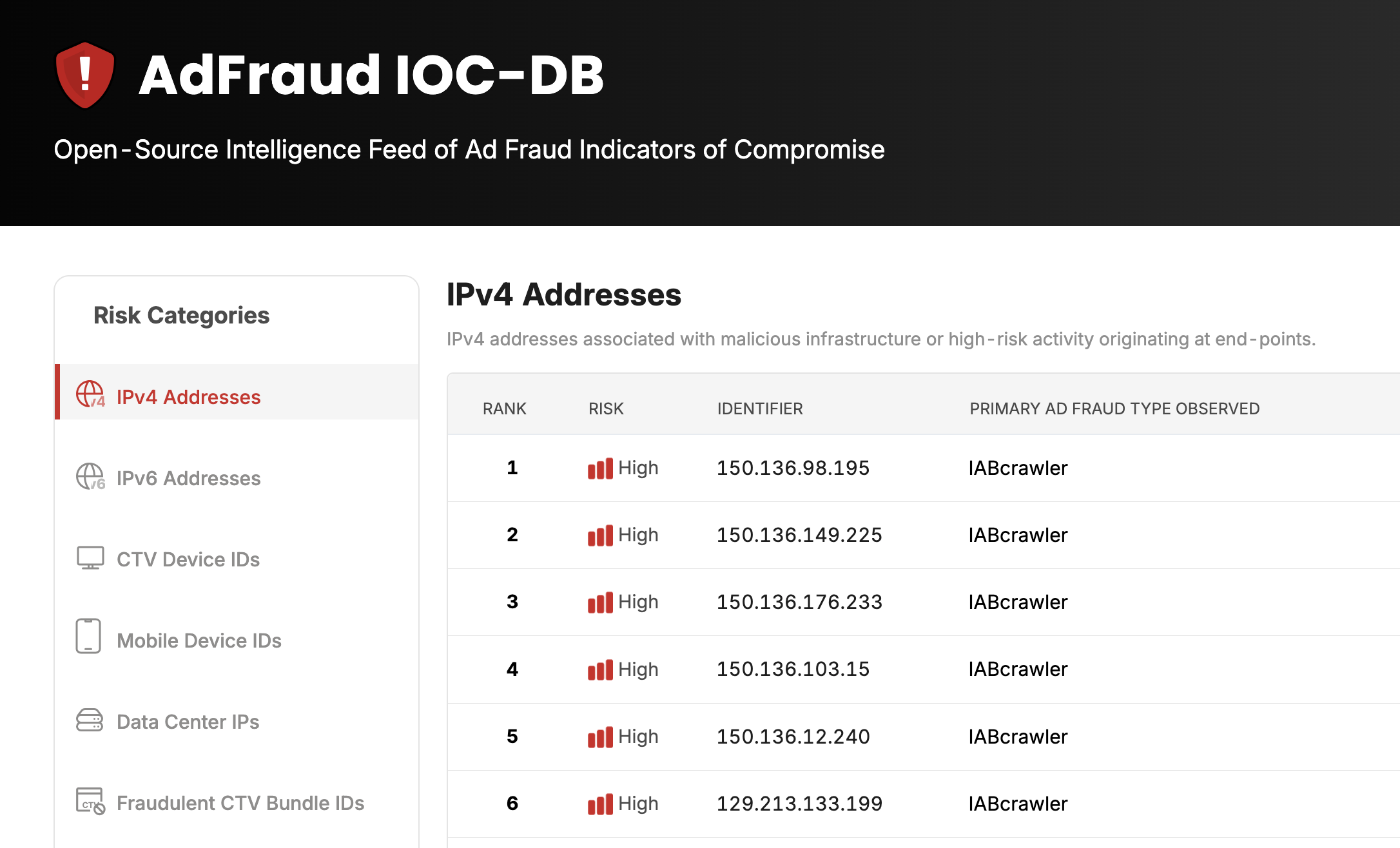Pixalate’s research reveals 12% of global open programmatic ad spend on Amazon Fire TV apps in Q3 2024 went to apps that are referred to by 10+ Bundle IDs, according to Pixalate’s data
LONDON, October 25, 2024 -- Pixalate, the market-leading fraud protection, privacy, and compliance analytics platform for Connected TV (CTV) and Mobile Advertising, today released the Q3 2024 CTV Bundle ID Mapping Reports for Roku, Amazon Fire TV, Apple TV, and Samsung Smart TV.
Pixalate’s data science team analyzed programmatic advertising activity across over 100k Connected TV (CTV) apps and nearly 5.4 billion global open programmatic ad transactions on Roku, Amazon Fire TV, Apple TV, and Samsung Smart TV devices in Q2 2024 to compile this research.
In CTV advertising, programmatic advertisers use “Bundle IDs” to identify specific CTV apps. A lack of standardization around the syntax of Bundle IDs has led to confusion around targeting and measurement, creating a vulnerability ad fraudsters can exploit.
Key Findings in Pixalate’s Q3 2024 CTV Bundle ID Mapping Report
Roku:
- Estimated Open Programmatic Ad Spend: 83% goes to apps referred to by multiple bundle IDs
- App Bundle IDs: 27% of apps are referred to by multiple bundle IDs in the open programmatic ad supply chain
Amazon Fire TV:
- Estimated Open Programmatic Ad Spend: 71% goes to apps referred to by multiple bundle IDs
- App Bundle IDs: 35% of apps are referred to by multiple bundle IDs in the open programmatic ad supply chain
Samsung Smart TV:
- Estimated Open Programmatic Ad Spend: 82% goes to apps referred to by multiple bundle IDs
- App Bundle IDs: 22% of apps are referred to by multiple bundle IDs in the open programmatic ad supply chain
Apple TV:
- Estimated Open Programmatic Ad Spend: 79% goes to apps referred to by multiple bundle IDs
- App Bundle IDs: 33% of apps are referred to by multiple bundle IDs in the open programmatic ad supply chain
Roku Apps Referred to by the Most Bundle IDs in Q3 2024
- Sling TV - Live Sports, News, Shows + Freestream – 99
- Xumo Play – 32
- Pluto TV – 18
- Filmrise – 12
- Discovery GO - 11
Apple TV Apps Referred to by the Most Bundle IDs in Q3 2024
- Sling: Live TV, Sports & News – 15
- Pluto TV: Watch & Stream Live – 11
- Xumo Play: Stream TV & Movies – 8
- Fubo: Watch Live TV & Sports – 6
- Plex: Watch Live TV and Movies – 5
Amazon Fire TV Apps Referred to by the Most Bundle IDs in Q3 2024
- Sling TV: Live Sports, News, Shows + Freestream – 50
- Xumo Play – 25
- Fubo: Watch Live TV & Sports, Shows, Movies & News – 16
- Pluto TV - It’s Free TV – 12
- Fox News: US, World, & Election News – 10
Samsung Smart TV Apps Referred to by the Most Bundle IDs in Q3 2024
- SAMSUNG TV PLUS – 102
- Sling TV – 35
- Pluto TV – 17
- Fubo: Watch Live TV & Sports – 15
- Xumo Play – 11
Pixalate’s Bundle ID to App Store ID mapping APIs can help by consistently handling Bundle IDs, ensuring accurate tracking, measurement, and reporting.
Additionally, the IAB Tech Lab has issued guidelines for the use of app IDs, and OpenRTB 2.6 has offered support and information for Channel and Network Objects to avoid overloading the Bundle ID field.
Download Pixalate’s CTV Bundle ID Mapping Reports:




About Pixalate
Pixalate is a global platform for privacy compliance, ad fraud prevention, and data intelligence in the digital ad supply chain. Founded in 2012, Pixalate’s platform is trusted by regulators, data researchers, advertisers, publishers, ad tech platforms, and financial analysts across the Connected TV (CTV), mobile app, and website ecosystems. Pixalate is MRC-accredited for the detection and filtration of Sophisticated Invalid Traffic (SIVT). www.pixalate.com
Disclaimer
The content of this press release, and the Q3 2024 CTV Bundle ID Mapping Reports (the “Reports”), reflect Pixalate's opinions with respect to factors that Pixalate believes may be useful to the digital media industry. Pixalate’s opinions are just that, opinions, which means that they are neither facts nor guarantees; and neither this press release nor the Report are intended to impugn the standing or reputation of any entity, person or app, but instead, to report findings and apparent trends in the time period studied. Per the MRC, “'Fraud' is not intended to represent fraud as defined in various laws, statutes and ordinances or as conventionally used in U.S. Court or other legal proceedings, but rather a custom definition strictly for advertising measurement purposes. Also, per the MRC, “‘Invalid Traffic’ is defined generally as traffic that does not meet certain ad serving quality or completeness criteria, or otherwise does not represent legitimate ad traffic that should be included in measurement counts. Among the reasons why ad traffic may be deemed invalid is it is a result of non-human traffic (spiders, bots, etc.), or activity designed to produce fraudulent traffic.”










